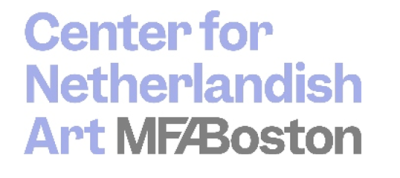The Center for Netherlandish Art (CNA) seeks 20-minute papers from emerging scholars that critically and creatively engage with the theme of Community and Collaboration in Dutch and Flemish art from the long 17th century (circa 1560-1800), with a particular interest in topics that explore new methods or histories.
Topics might include but are not limited to:
- Visualizations of artists’ studios and other spaces of cooperation;
- Physical and psychological isolation and exile within and beyond the Dutch Republic and Flanders;
- Artists as community leaders;
- The role of gender and gender identity in community.
A total of three papers will be selected for presentation during the 2023 CNA Colloquium, scheduled for Friday, May 12th, 2023. This daylong event offers a platform for selected emerging scholars to share original research with the international community of experts in the field. The program will be held in a hybrid format, allowing for both in-person and virtual participation. Further event details will be shared closer to the event date.
How to apply
We invite contributions from MA students, PhD candidates, and postdoctoral researchers with less than five years of working experience. Individuals of all nationalities may apply. As we amplify our efforts toward becoming truly inclusive, ensuring that diversity and equity are lived values, we actively encourage candidates from traditionally underrepresented backgrounds to submit proposals.
Please submit a title and abstract (500 words maximum) and a CV in one single PDF file to cna@mfa.org, with ‘Call for Papers’ included in the email’s subject line.
Submissions are accepted on a rolling basis through February 1, 2023. Selected participants will be notified by February 17, 2023.
Selected candidates will have the opportunity to workshop their papers during a rehearsal presentation one week prior to the event.
Background
Scholarship and museum exhibitions have long recognized the artistic achievements of individual artists like Rembrandt, Vermeer and Rubens, but in the 17th-century Netherlands collaboration, partnership, and studio practices fueled artistic creativity and production. Studio practices, such as those described by Rembrandt’s pupil Samuel van Hoogstraten, could also reinforce and reflect power and hierarchy. Likewise, Rubens and his pupil Anthony van Dyck together shaped—and re-shaped—visual convention for aristocratic portraiture. Artists reached outside the studio to engage with collaborators in other professions, forming partnerships that resulted in various types of printed, visual, and performing arts. Artist studios, guilds, chambers of rhetoric, marketplaces, universities, churches, and private homes—to name a few places—also served as sites of artistic mentorship, teaching, and innovation.
On the other hand, long periods of travel and infrequent correspondence made it difficult to forge lines of communication or connection. Though many artists were active in creative and commercial centers, some were not. Some may have experienced uncomfortable isolation—phases of boredom and restlessness, social confinement, or geographic remoteness—not dissimilar to the experience that many people had early in the COVID-19 pandemic.
The work of Frans Post and Albert Eckhout demonstrates some ways in which Dutch artists attempted to represent ideas of community and isolation beyond the Republic, while Dutch and Flemish artists such as the Bamboccianti and Bentvueghels sought the companionship of their countrymen even while pursuing new ideas and experiences in Rome. Gender, political beliefs, religious affiliations, and other aspects of personal identity also informed artistic collaboration and a sense of community; as much as some artists were embraced for their abilities and beliefs, others were exiled. From Pieter Bruegel the Elder and Jan Steen’s crowded and lively scenes of taverns and domestic life, to the isolation seen in Rembrandt’s later self-portraits—works of art from this period show a spectrum of collaboration and community throughout the period.
Organized by Rachel Kase and Sarah Mallory, with support from the Center for Netherlandish Art (CNA) at the Museum of Fine Arts, Boston.
